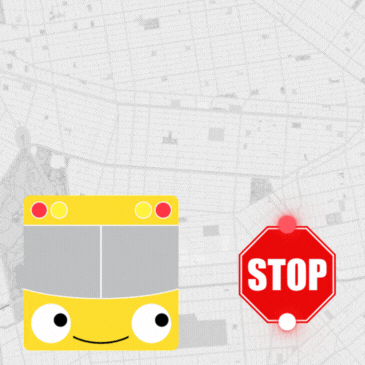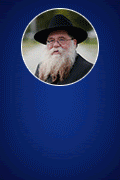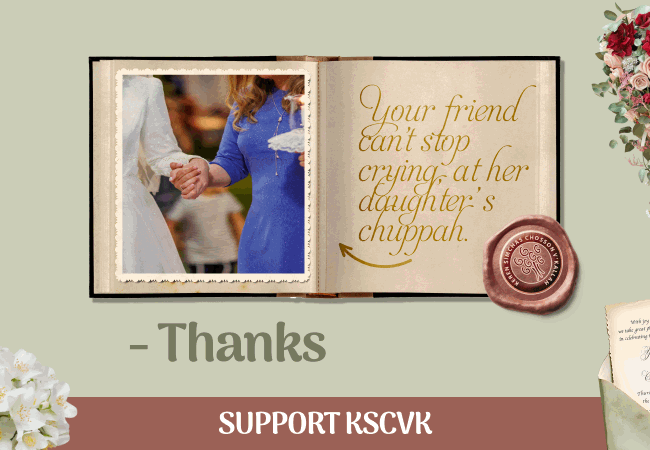Our Outlook On Death Makes All The Difference
It was a busy morning, about 8:30 an elderly gentleman in his 80's arrived to have stitches removed from his thumb. He said he was in a hurry as he had an appointment at 9:00 am. I took his vital signs and had him take a seat, knowing it would be over an hour before someone would to able to see him.
I saw him looking at his watch and decided, since I was not busy with another patient, I would evaluate his wound. On exam, it was well healed, so I talked to one of the doctors, got the needed supplies to remove his sutures and redress his wound.
While taking care of his wound, I asked him if he had another doctor's appointment this morning, as he was in such a hurry. The gentleman told me no, that he needed to go to the nursing home to eat breakfast with his wife.
The Living Dead vs Eternal Life
Our Outlook On Death Makes All The Difference
It was a busy morning, about 8:30 an elderly gentleman in his 80’s arrived to have stitches removed from his thumb. He said he was in a hurry as he had an appointment at 9:00 am. I took his vital signs and had him take a seat, knowing it would be over an hour before someone would to able to see him.
I saw him looking at his watch and decided, since I was not busy with another patient, I would evaluate his wound. On exam, it was well healed, so I talked to one of the doctors, got the needed supplies to remove his sutures and redress his wound.
While taking care of his wound, I asked him if he had another doctor’s appointment this morning, as he was in such a hurry. The gentleman told me no, that he needed to go to the nursing home to eat breakfast with his wife.
I inquired as to her health. He told me that she had been there for a while and that she was a victim of Alzheimer’s Disease. As we talked, I asked if she would be upset if he was a bit late. He replied that she no longer knew who he was, that she had not recognized him in five years now.
In surprise I asked “And you still go every morning, even though she doesn’t know who you are?”
He smiled as he patted my hand and said, “She doesn’t know me, but I still know who she is.”
I had to hold back tears as he left, I had goose bumps on my arm, and thought, “That is the kind of love I want in my life.” True love is neither physical, nor romantic.
True love is an acceptance of all that is, has been, will be and will not be. (Anonymous Email Circulation)
– – – – – – – – – – – – – – – – – – – – – – – – – – – – – –…Americans are no longer sure what to do with our dead. Rituals of death, rest on the basic need, recognized by all societies, to remove the bodies of the dead from among the living. A corpse must be taken fairly quickly from the place of death to somewhere else. But no healthy society has ever treated this as a perfunctory task, a matter of mere disposal. Indeed, from the beginning, humans have used poetry, song and prayer to describe the journey of the dead from “here” to “there” in symbolic, even sacred, terms. The dead are not simply being carted to the pit, the fire or the river; they are traveling toward the next world… and we are accompanying them the last mile of the way.
Every generation re-imagines these images of what lies beyond this life, but what persists is the conviction that the dead are not refuse to be discarded; they are human treasures traveling somewhere and it is our holy responsibility to go with them all the way to the place of farewell.
Thus, funerals often involve processionals, sometimes simple, sometimes elaborate… thereby enabling both the dead and the living to process the reality and meaning of mortality.
…“A good funeral,” says Thomas Lynch, a poet and undertaker in Milford, Mich., “is one that gets the dead where they need to go and the living where they need to be.”
Today, however, our death rituals have become downsized, inwardly-directed, static and, as a result, spiritually and culturally impoverished. We tend now to recognize our dead only for their partial passions and whims. They were Mets fans, good for laughs at the office, pleasant companions on the links.
At upbeat, open-mike “celebrations of life,” former coaches, neighbors and relatives amuse us with stories and naïvely declare that the dead, who are usually nowhere to be seen and have nowhere to go, will nevertheless live always in our memories. Funerals, which once made confident public pilgrimage through town to the graveyard, now tread lightly across the tiny tableau of our psyches.
Even those mourners who, by will or habit, wish to take their dead to the place of departure often find their way blocked. Some cemeteries, fearing liability lawsuits from falls and the like, no longer allow funeral processions to go the distance to the open grave but encourage the mourners to leave the coffin in a faux sanctuary at the entrance… like a night deposit at the bank.
For the first time in history, the actual presence of the dead at their own funerals has become optional, even undesirable, lest the body break the illusion of a cloudless celebration, spoil the meditative mood and reveal the truths about grief, life and death that our thinned-out ceremonies cannot bear.
A corpse is a stark reminder that human beings are inescapably embodied creatures, and that a life is the sum of what has been performed and spoken by the body — a mixture of promises made and broken, deeds done and undone, joys evoked and pain inflicted. When we lift the heavy weight of the coffin and carry the dead across the muddy cemetery to the open grave, we bear public witness that this was a person with a whole and embodied life, one that, even in its ambiguity and brokenness, mattered and had substance.
“Show me the manner in which a nation cares for its dead, and I will measure with mathematical exactness the tender mercies of its people,” William Gladstone, the British statesman, is said to have observed. Indeed, we will be healthier as a society when we do not need to pretend that the dead have been transformed into beautiful memory pictures, Facebook pages or costume jewelry, but can instead honor them by carrying their bodies with sad but reverent hope to the place of farewell. People who have learned how to care tenderly for the bodies of the dead are almost surely people who also know how to show mercy to the bodies of the living.
(Thomas G. Long, professor at the Candler School of Theology at Emory University, author of “Accompany Them With Singing.” (Excerpted from a New York Times Op-Ed, Oct. 31, 2009))
– – – – – – – – – – – – – – – – – – – – – – – – – – – – – –
Our Torah portion for this week opens with the death of the first Jew(ess). It describes, in considerable detail, the ending journey and burial of our matriarch Sara – the honor afforded her by her loving husband, Avraham, in bringing her to her appropriate eternal place of rest.
As we read the narrative of the demise of the first matriarch, we’re introduced to the Jewish way in death and mourning. As the immortal soul makes its way back to the world beyond and the body heads back to the earth from which it was formed, we are shown our correct role, responsibility and reaction to the dramatic and traumatic phenomenon. We are taught to eulogize, to honor and to mourn.
Upon reading the narrative of Avraham’s deep sensitivity and gracious sorrow; as we encounter his tenacious and methodical determination to honor his wife with the perfect burial place and eulogy; sparing no effort or expense, we cannot help but take note of how things have changed over the years.
Gone are the days when a person, having completed his days in this world, is visited with respect, remorse and sadness – when people speak in hushed tones while he lay in a quiet room off to the side. These are the days when there is a noisy parade of people coming and going as they kibitz with the mourners in advance of the ceremony that is meant to eulogize their loved one. Often the discussion turns to the food that awaits the mourners after they “Get over” the ceremonies.
The ceremony itself has changed as well. What was once a somber occasion “Honoring” the higher spirit of the human, has become substantially more trivial. It has become a “Celebration” of the person’s mundane life; a time in which we recognize not the character of the deceased, but rather his “passions, hobbies and whims;” the fact that they enjoyed golf, mahjong or karaoke.
In our desire to avoid, and perhaps even sanitize the unnerving notion of mortality and death, it is not unheard of for the deceased to be banned from his own funeral, the stated reason is the “respect of the living.”
According to the above mentioned Op-Ed article written by Thomas G. Long, a Jewish cemetery in New York State wanted to make the entire family wait at the gate while the body was being buried.
After some lengthy negotiations with the help of the director of the funeral home, they were able to sign a waiver that allowed them to go out to the grave to say Kadish and throw a shovel of earth upon the casket after lowering it into the ground. Without the signed waiver, releasing the cemetery of any liability, their long journey would have ended at the iron gate of the cemetery entrance.
It is becoming increasingly common for funerals to be “Private” in nature – a graveside ceremony for family only. “Rabbi, make it short! She wasn’t very religious, and it’s cold outside!”
For convenience sake we have impoverished this most sacred eye opening occasion of the human experience – a time to reflect upon whence man comes, whence he is going, and before whom he stands to give a detailed accounting – stripping it of its spirituality and revealing powers.
So, why do we shun death in this way? Are we perhaps emotionally drained by the dying process – whether it be through a prolonged illness or years of dementia – that death has become a release, a time of ‘relief’ or ‘celebration’. “Mom or Dad is now out of their misery!” It is as if we have grieved enough.
Besides for being somewhat selfish, this mentality tends to be ignorant of the fact that the Jewish way of burial and mourning is intended to help re-orient the griever, in the gentle way, back to a normal pattern of living while emotions are still raw and memories still fresh. The funeral, the seven days, thirty days, eleven months… Each of these have comforting qualities in the human grieving process. People who don’t properly grieve or complete the grieving process are psychologically harmed. It is not the funeral or grieving process that causes emotional harm but the lack thereof, not to mention the spiritual void.
Our traditions enables us to bear our sorrow with dignity in a real way. Having the casket in front of us as we speak of the deceased is a stark reminder that the person whom we are eulogizing is greater than the sum of the parts that are mentioned in our comments about the deceased.
When the pall bearers lift the casket the weight of a person’s deeds becomes self-evident. Judaic practice does not minimize death by having us walk away from the open grave without having the stark reality of lifting some earth and placing it into the grave along with the body, hearing the hollowness as it hits the surface. It is the reality of who we are, paying homage to our Divine and spiritual essence. The earth is our blanket, as we are tucked away for an eternity in the same way that parents tuck in their children each night, making them safe in the darkness.
In the end, the way we view death is the way we view life and the way we live life. When we recognize death as an inevitable fact of life – the most important fact of life, then our time takes on new urgency and importance. Our actions likewise have far more meaning and significance. To hide or downplay the truth about death, on the other hand, by sanitizing it or removing it from sight, is to live in a world of delusion.
This extreme distain for death is the result of its interference with one’s irresponsible lifestyle – one for which the thought of any afterlife and accountability is extremely sobering. Fear of death is inevitably the result of a denial of the soul and its eternal qualities and man’s Divine image. What follows is a life of arbitrary morals and values, in the best case scenario – one of little if any spirituality and purpose. The worst case scenario has no limit to the degree of immorality and inhumanity, as has been proven time and again by the G-dless individuals and cultures throughout history.
May we take to heart the lesson of the passing of the first Jew, as related in our Parsha. May we learn from Avraham Avinu how to value life, humanity and the eternity of the soul, from the way he handled the burial and mourning of his beloved wife – the urgency, tenacity and respect that stems from his appreciation of her eternal soul.
In doing so we will live a truly spiritual and G-dly life, and thereby fulfill our mission of making the world a dwelling place for G-d, which will in turn hasten the coming of the righteous Moshiach and fulfillment of the promise of the resurrection of the dead with all the patriarchs and matriarchs amongst them including all of Israel BBA.
















Kudos
Thank you for these meaningful words. They are worth reading and worth sharing.